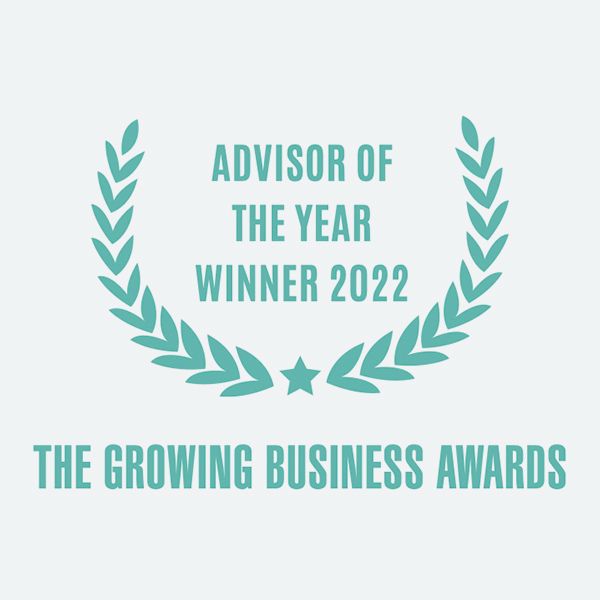
Go-To-Market Strategy Services For Startups
At Robot Mascot we’ve supported thousands of founders to develop business plan assets including go-to-market strategies.
We’ve supported founders from all over the world, helping them develop a go-to-market strategy via our global award-winning investor pitch service, PitchReady. As a result of our help in preparing their business plan which includes a solid go-to-market strategy, our founders find they are 40 times more likely to raise investment.
This page will tell you exactly what a go-to-market strategy is, how we develop go-to-market strategies for startups and how to use yours when pitching for investment.
What is a go-to-market strategy?
A go-to-market (GTM) strategy is a comprehensive action plan that specifies how a company will reach target customers and achieve a competitive advantage. Its purpose is to provide a blueprint for delivering a product or service to the end customer, taking into account factors like pricing and distribution. GTM strategies are often used for launching new products or entering new markets.
Key components of a go-to-market strategy include:
- Market definition
- Customer segmentation
- Value proposition
- Distribution channels
- Pricing strategy
- Sales and marketing strategy
- Competitive analysis
- Product positioning
- Revenue and sales goals
- Metrics and KPIs.
READ: Exploring The Mind Of A Founder: Why Investors Want To Understand Your Strategic Thinking
What is the role of a go-to-market strategy for a startup seeking investment?
The role of a go-to-market (GTM) strategy for a startup seeking investment is multifaceted and critically important, serving as a key component in convincing potential investors that the startup has a viable plan for success.
Here’s how a GTM strategy plays a vital role within the investment context:
Demonstrating market understanding
A well-crafted GTM strategy shows that the startup deeply understands its target market. It indicates that the founders know who their customers are, what problems they need to solve, and how their product or service fits into the market.
Validating the product/service
The GTM strategy helps validate the startup’s offering by outlining how it will meet the needs of its target market. It demonstrates the product-market fit, which is a key indicator of potential success that investors look for.
Showcasing a plan for revenue growth
Investors are particularly interested in how a startup plans to generate revenue. A GTM strategy outlines the sales and marketing approach, pricing strategy, and distribution channels, providing a clear roadmap for revenue generation.
Highlighting competitive advantage
A GTM strategy should articulate the startup’s unique value proposition and how it differentiates from competitors. This helps investors understand the startup’s edge in the market and its potential for long-term success.
Risk mitigation
By addressing potential challenges and how they will be overcome, a GTM strategy demonstrates risk awareness and mitigation. This is important for investors, as it shows that the startup is realistic and prepared for potential obstacles.
Setting clear objectives and milestones
A GTM strategy includes specific goals and milestones, which are vital for tracking progress. Investors use these to assess whether the startup is meeting its targets and executing its strategy effectively.
Facilitating investor alignment
A clear GTM strategy helps align the startup’s objectives with those of its potential investors. It ensures that both parties are on the same page regarding the direction and growth potential of the business.
Building credibility and trust
A well-researched and well-articulated GTM strategy can significantly enhance the credibility of the startup team. It shows that the founders are not only passionate but also strategic and business-savvy, which helps in building trust with investors.
A GTM strategy is not just a plan for how a startup will enter the market and achieve success; it’s a critical tool for communicating the startup’s vision, strategy, and potential to investors. It plays a pivotal role in securing investment by demonstrating preparedness, market savvy, and a clear path to profitability.
How do you develop a go-to-market strategy for a startup?
When we develop a go-to-market (GTM) strategy for a startup or new product, we follow a series of structured steps that align your product or service with your target market and business goals. But bear in mind that while this is a template, all startups are different and our strategic approach varies from business to business.
Here’s an idea of how we create a go-to-market strategy:
Understanding your market and audience
- We will help you conduct thorough research to understand the market size, growth potential, trends, and dynamics.
- We will also help you Identify and segment your target customers. Understand their needs, pain points, preferences, and buying behaviour.
Define your value proposition
- We’ll work with you to clearly articulate what makes your product or service unique and why it is beneficial to your target audience. This should address a specific need or problem of your target market.
Analyse your competition
- We’ll identify your direct and indirect competitors.
- We’ll help you to understand their strengths, weaknesses, and strategies.
- We’ll work to determine how your offering is different and why customers should choose it over others.
Choose your sales and distribution channels
- Decide how you will sell your product or service (e.g. online, direct sales, through partners).
- We’ll collaborate on defining the most effective channels to reach your target audience.
Develop your pricing strategy
- Determine your pricing model based on market research, perceived value, competitor pricing, and cost analysis.
- Ensure your pricing strategy aligns with your overall market positioning.
Create a marketing plan
- We can help you develop a plan to promote your product or service to your target audience. This will include choosing the right marketing channels (social media, email marketing, content marketing, etc.).
- Next, plan your messaging and positioning across these channels.
Plan for sales and customer support
- We’ll develop a sales strategy that aligns with your customer acquisition goals.
- Ensure you have the necessary support structure for post-sale customer service.
Set clear objectives and key performance indicators (KPIs)
- We can work with you to define what success looks like with specific, measurable goals.
- This includes identifying KPIs to track progress towards these goals.
Crafting a Go-To-Market (GTM) strategy for a startup entails navigating a complex landscape with various interconnected elements. Even a minor adjustment can introduce inconsistencies in your approach, potentially impeding your progress with investors. We are here to work collaboratively and guide you through the intricacies of formulating your go-to-market strategy, providing you with support every step of the way.
Go-to-market strategy for startups example
Imagine ‘WellBeing Tech’, a UK-based startup that has developed an innovative mental wellness app tailored for university students. The app uses AI to provide personalised mental health support, including stress management tools and resources for mental well-being.
This summary of their GTM strategy is tailored to effectively introduce WellBeing Tech’s mental wellness app to the UK market, focusing on university students and leveraging partnerships with educational institutions to maximise reach and impact.
- Market analysis
- Target Market: University students across the UK, aged 18-25.
- Market Size: Approximately 2.3 million university students in the UK.
- Trends: Increasing awareness of mental health issues among young adults, growing acceptance of digital health solutions.
- Customer segmentation
- Primary: University students experiencing stress and seeking accessible mental health support.
- Secondary: Universities and educational institutions looking for tools to support student well-being.
- Value proposition
- For students: A user-friendly app offering immediate, personalised mental health support.
- For universities: A scalable solution to enhance student mental health services.
- Sales and distribution channels
- Digital channels: App available for download on iOS and Android, promoted through university email lists and social media platforms.
- Partnerships with universities and student organisations.
- Outreach at student fairs and university events.
- Pricing strategy
- Freemium model with core features available for free.
- Premium subscription offering in-depth features, such as personalised therapy sessions and advanced analytics.
- Marketing plan
- Social Media Marketing: Targeting platforms popular among students, like Instagram and TikTok.
- Influencer Partnerships: Collaborating with student influencers and mental health advocates.
- Content Marketing: Blogging about student mental health, stress management techniques, and app usage tips.
- University Partnerships: Engaging with universities for official endorsements and collaborations.
- Sales strategy
- Direct-to-consumer through the app stores.
- B2B approach for bulk licensing deals with universities and educational institutions.
- Key metrics
- User acquisition rates within the student demographic.
- Conversion rates from free to premium subscriptions.
- User engagement metrics, such as session length and frequency.
- Feedback and satisfaction scores from users and partner institutions.
- Launch plan
- Initial launch targeting a select group of universities for a pilot program.
- Full-scale launch with broader marketing efforts following the pilot’s success.
- Post-launch strategy
- Ongoing collection of user feedback for continuous app improvement.
- Expansion of features based on technological advancements and user needs.
- Exploring partnerships with mental health organisations and potential international expansion.
Go-to-market strategy for startup template
The template below serves as a guide for startup founders to develop their go-to-market strategy. It’s important to tailor each section to the specifics of your startup, ensuring that the strategy aligns with your unique business model, product/service, and market environment.
| Element | Details |
|---|---|
| Executive summary |
|
| Market analysis |
|
| Target customer |
|
| Competitive analysis |
|
| Value proposition |
|
| Product/service overview |
|
| Sales and distribution strategy |
|
| Pricing strategy |
|
| Marketing and promotion plan |
|
| Launch plan |
|
| Key metrics and goals |
|
| Budget |
|
| Risk assessment and contingency plan |
|
| Conclusion and next steps |
|
Startup go-to-market strategy FAQ
What is unique about go-to-market strategies for tech startups?
Tech startups operate in a unique environment characterised by rapid technological advancements, high market volatility, and intense competition. This landscape demands specific considerations in their go-to-market (GTM) strategies.
For example, tech markets evolve quickly, making speed a critical factor. Tech startups need to launch products swiftly to capitalise on current market needs and stay ahead of competitors.
Here are some other considerations for go-to-market strategies for tech startups:
- Tech products often have the potential for exponential growth, so the strategy should include plans for scaling up marketing, sales, and support to match this growth.
- Tech startups must be ready to pivot their GTM strategy in response to new technological developments, changing market conditions, or unexpected competitive moves.
- Tech startups often rely heavily on digital channels for marketing and sales. This includes leveraging social media, search engine optimization (SEO), content marketing, and digital advertising to reach a broader audience more efficiently.
- Utilising data analytics is crucial in shaping GTM strategies for tech startups. Real-time data allows for more informed decisions regarding customer preferences, market trends, and the effectiveness of marketing and sales tactics.
- Many tech startups focus on building a community around their product or service. This can include engaging with users on social media, creating user groups, or developing online forums where customers can interact and provide feedback.
Tech startups often experiment with various pricing models like freemium, subscription, or usage-based pricing to find what best suits their market and product type.
How is a go-to-market strategy different for a lean startup?
Lean startups, characterised by their focus on efficiency and agility, approach GTM strategies differently:
- Iterative approach
- Lean startups often adopt an iterative approach to their GTM strategy. They start with a hypothesis about the market, test it, learn from the results, and then refine their approach. This cycle repeats, allowing for continuous improvement based on real-world feedback.
- Minimum viable product (MVP)
- The GTM strategy for a lean startup often revolves around the concept of an MVP. This means launching a product with just enough features to satisfy early adopters and gather valuable feedback for future development.
- Customer feedback focus
- Lean startups prioritise customer feedback in shaping their GTM strategy. They engage closely with their first users to understand their needs and pain points, which informs product development and market positioning.
- Agile development processes
- The product development process in lean startups is highly agile, allowing for quick adjustments based on market feedback. This agility is mirrored in the GTM strategy, which remains flexible to accommodate changes in the product.
- Cost-effective marketing
- Lean startups often work with limited budgets, making cost-effectiveness a key consideration in their GTM strategies. They might rely more on organic growth tactics, partnerships, word-of-mouth, and grassroots marketing efforts.
- Lean metrics
- The focus on lean operations extends to the metrics used to evaluate the GTM strategy. Lean startups focus on key performance indicators (KPIs) that offer the most significant insights for the least effort and cost.
- Partnerships and collaborations
- To extend their reach without extensive resource investment, lean startups may seek strategic partnerships and collaborations for co-marketing or co-development opportunities.
While tech startups focus on speed, scalability, and a digital-first approach due to the nature of their industry, lean startups emphasise an iterative, feedback-driven, and cost-effective approach in their GTM strategies, aligning with their overall business philosophy of efficiency and agility.
Getting your business ready: Understanding Investment Readiness
Before you consider pitching your business to investors, you must first ensure that your business is indeed ready for investment – that it is ‘investment ready’.
Investment readiness refers to the state in which a startup or business has prepared itself to be an attractive prospect for investors. Being ‘investment ready’ means a founder has all the elements in place that investors look for when considering whether to commit funds to a business – including a viable go-to-market strategy.
There are investor readiness agencies for startups that can help businesses get ready for investment and develop their business case. We at Robot Mascot are one such company.
If you are seeking investment for your business and need help developing your go-to-market plan why not get in touch?






Copyright ©Robot Mascot Ltd. All rights reserved.

